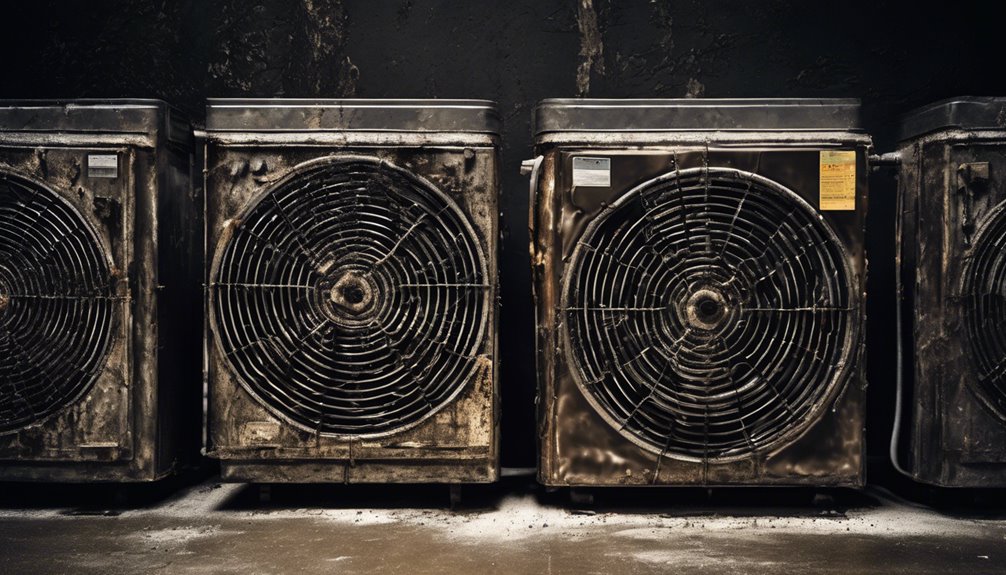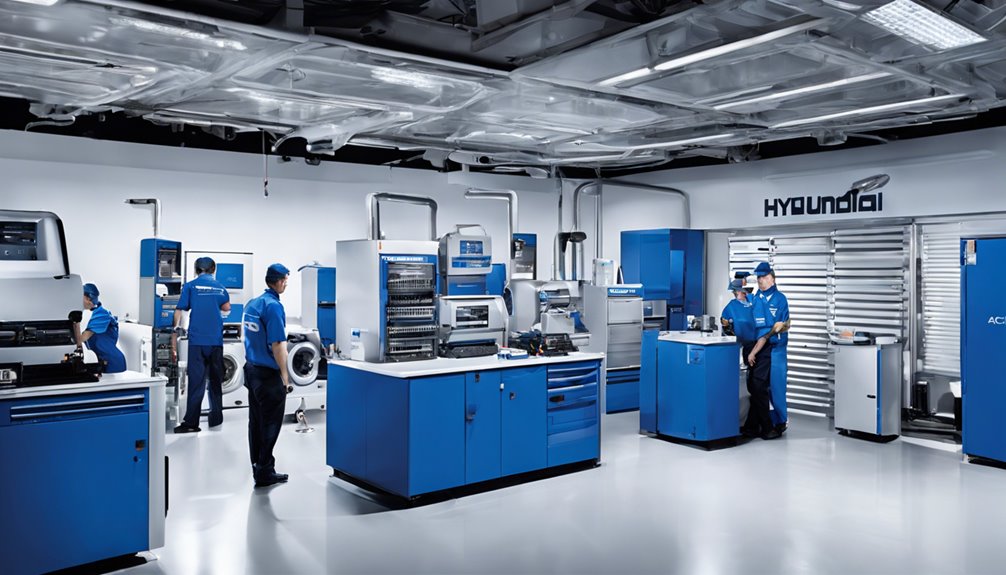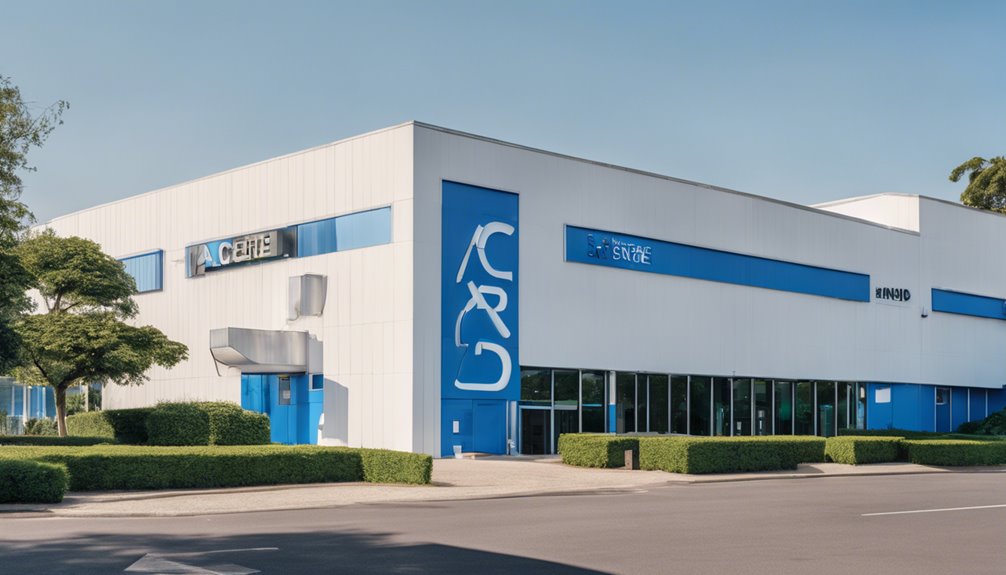As you consider AC cleaning and coil maintenance, remember that neglecting this crucial task can lead to reduced airflow, increased energy bills, and system breakdowns. Regular cleaning is essential to ensure your cooling system operates efficiently, prolongs its lifespan, and reduces replacement costs. By understanding the importance of coil maintenance, you'll be able to identify common cleaning challenges, learn effective cleaning methods, and schedule regular tune-ups. Take the first step towards a more efficient and cost-effective cooling system – explore the benefits of AC coil maintenance.
Key Takeaways
- Regular AC coil cleaning and maintenance are crucial for optimal system performance, energy efficiency, and indoor air quality.
- Neglecting coil maintenance leads to reduced airflow, increased energy bills, and system breakdowns, making it a critical component of HVAC upkeep.
- Coil cleaning methods include compressed air, soft-bristled brushes, and specialized coil cleaning brushes to gently sweep away dirt and grime.
- Scheduling seasonal maintenance, including spring prep and winterization, helps ensure coils are cleaned and inspected at the right times to prevent system issues.
- Budgeting for AC coil maintenance is essential to reduce replacement costs, increase equipment lifespan, and minimize downtime and maintenance needs.
Understanding the Importance of AC Coil Maintenance
When your air conditioner is humming along on a sweltering summer day, it's easy to take its performance for granted.
However, it's crucial to remember that your AC's coils play a vital role in its overall function. Neglecting coil maintenance can lead to reduced airflow, increased energy bills, and even system breakdowns.
Regular cleaning and maintenance are essential for coil longevity, which directly impacts system reliability. By keeping your coils clean, you'll ensure your AC operates efficiently, effectively, and safely.
It's a simple yet crucial step in maintaining a comfortable indoor climate while also protecting your investment.
How Dirty Coils Affect System Performance
Dirty AC coils can silently sabotage your system's performance, causing you to sweat more than the summer heat.
You mightn't even notice it's happening, but dirty coils can lead to significant issues that affect your system's overall efficiency.
Dirty coils impact your system in several ways:
- Reduced coil efficiency: Dirt and debris block airflow, making your system work harder to cool your space.
- Increased energy bills: Your system consumes more power to compensate for the reduced airflow, leading to higher energy costs.
- System sluggishness: Dirty coils restrict airflow, causing your system to slow down and work less effectively.
- Increased wear and tear: The extra strain on your system can lead to premature wear and tear, reducing its lifespan.
Identifying Common Coil Cleaning Challenges
Coil cleaning is a crucial maintenance task, but it's often easier said than done.
You may encounter several challenges that can make it difficult to get the job done efficiently. One common issue is coil corrosion, which can weaken the coil's structure and make cleaning more complicated.
Another challenge is filter clogs, which can reduce airflow and make it harder to access the coils. You may also face difficulties in accessing the coils themselves, especially if they're located in tight or hard-to-reach spaces.
Additionally, you might struggle with removing stubborn dirt and debris that have built up over time.
Coil Cleaning Methods and Best Practices
You have several coil cleaning methods to choose from, each with its own advantages and disadvantages.
The right method for you depends on the coil design, the level of dirt buildup, and the type of cleaning technology you have access to.
- Use compressed air or nitrogen to blow out loose debris and dust
- Employ a soft-bristled brush or a specialized coil cleaning brush to gently sweep away dirt and grime
- Apply a coil cleaning solution or a mild detergent to the coils and let it sit before rinsing with water
- Utilize a high-pressure washer, but be cautious not to damage the coils or surrounding components
Air Duct Cleaning and Inspection Guidelines
You're about to learn how to ensure your air ducts are clean and well-maintained, which is crucial for your AC's performance and indoor air quality.
To get started, you'll need to inspect your ducts, and we'll walk you through a comprehensive checklist to help you do just that.
From there, we'll explore the different cleaning methods and the step-by-step process for removing debris and contaminants.
Duct Inspection Checklist
About 80% of air ducts in commercial and residential buildings contain significant amounts of dirt, dust, and debris, making regular duct inspections crucial for maintaining good indoor air quality and HVAC system efficiency.
When conducting a duct inspection, you'll want to follow a thorough checklist to ensure nothing is overlooked.
- Verify that all ducts are properly sealed and insulated
- Perform duct mapping to identify any hidden sections or areas of concern
- Check for signs of mold, mildew, or water damage that can negatively impact air quality
- Inspect vents and ducts for blockages, kinks, or other obstructions that restrict airflow
Cleaning Methods Explained
After identifying areas of concern in your duct system, it's time to tackle the cleaning process. You'll want to choose a cleaning method that effectively removes dirt and debris without damaging your system. There are two primary methods: vacuum-based cleaning and compressed air cleaning.
| Method | Effectiveness |
|---|---|
| Vacuum-based cleaning | Best for removing heavy debris and dust |
| Compressed air cleaning | Effective for coil chemistry and filter functionality |
| Brush-based cleaning | Useful for navigating tight spaces and corners |
When selecting a cleaning method, consider the type of debris present and the design of your duct system. Remember to always follow manufacturer guidelines and take necessary safety precautions to ensure a successful cleaning process.
Debris Removal Process
The debris removal process is a crucial step in air duct cleaning, and it's essential to follow established guidelines to ensure a thorough and safe cleaning.
You'll want to prioritize debris prevention to avoid re-circulating contaminants back into the air.
During the process, you'll need to conduct an exhaustive cleaning of the air ducts, vents, and surrounding areas.
Some key steps to include in your debris removal process are:
- Using specialized equipment, such as vacuums and brushes, to dislodge and remove debris
- Implementing containment procedures to prevent debris from spreading to other areas
- Inspecting and cleaning all accessible parts of the air duct system
- Documenting the cleaning process and results to ensure accountability and quality control
Scheduling and Budgeting for AC Coil Maintenance
You know that regular AC coil maintenance is crucial, but it's just as important to plan and budget for it.
To get started, you'll need to create a seasonal maintenance schedule that ensures your coils are cleaned and inspected at the right times.
Seasonal Maintenance Schedule
Scheduling regular maintenance for your AC coils is crucial to ensure their optimal performance and extend their lifespan.
By following a seasonal maintenance schedule, you'll be able to catch potential issues before they become major problems.
Here's a checklist to get you started:
- Spring prep: Clean your AC coils to remove dirt and debris accumulated during the winter months. This ensures efficient airflow and prevents damage to the compressor.
- Inspect and clean the condenser coils to ensure optimal heat transfer.
- Perform Winterization tasks, such as covering the AC unit and securing outdoor furniture, to protect your system from harsh weather conditions.
- Schedule a professional tune-up to identify and address any potential issues before the peak summer season.
Budgeting for Efficiency
Budgeting for AC coil maintenance is essential to ensure your system operates efficiently and effectively throughout the year.
You can't afford to neglect this crucial aspect of AC maintenance, as it directly impacts your energy consumption and expenses.
By allocating a specific budget for coil maintenance, you'll reap the benefits of energy savings and cost reduction. A well-maintained AC coil system consumes less energy, resulting in lower utility bills.
Additionally, regular maintenance helps prevent unexpected breakdowns, reducing the need for costly repairs.
Measuring the ROI of Regular AC Coil Cleaning
Regular AC coil cleaning can have a significant impact on a building's energy efficiency and bottom line, but how do you put a dollar value on it?
You can measure the return on investment (ROI) by tracking key performance indicators before and after implementing a regular cleaning schedule.
Some key benefits to track include:
- Extended equipment lifespan, reducing replacement costs
- Improved system performance, leading to increased energy efficiency and cost savings
- Reduced energy consumption, resulting in lower utility bills
- Enhanced indoor air quality, improving occupant health and productivity
Frequently Asked Questions
Can I Clean My AC Coils Myself or Do I Need a Professional?
You can try cleaning your AC coils yourself, but consider the coil accessibility and your DIY limitations – if they're hard to reach or you're unsure, it's best to hire a pro to ensure a thorough and safe job.
How Often Should I Inspect My AC Coils for Cleaning?
Did you know 60% of energy losses are due to dirty coils? You should inspect your coils every 1-3 months, depending on your usage and environment, to determine the best cleaning schedule for optimal coil condition and energy efficiency.
What Are the Consequences of Neglecting AC Coil Maintenance?
If you neglect maintenance, you'll face decreased system efficiency, increased energy bills, and poor coil performance, leading to reduced airflow, overheating, and even system failure, forcing you to shell out more cash for repairs or even a new unit.
Can Cleaning AC Coils Reduce My Energy Bills?
You're wondering if cleaning AC coils can lower your energy bills. Yes, it can! By removing dirt and debris, you'll improve coil efficiency, leading to significant energy savings – think reduced electricity costs and a happier wallet!
Do All Types of AC Coils Require the Same Cleaning Method?
Imagine a dusty, neglected coil suffocating your AC's performance. When it comes to cleaning, you'll find that different coil materials, like copper, aluminum, or steel, require unique approaches. You'll need to adjust your cleaning frequency accordingly to ensure optimal results.
Conclusion
You've made it to the end of this article, and by now, you're probably thinking, "Wow, AC coil maintenance is a real breeze!" But let's be real, it's not exactly the most exciting task on your to-do list. Yet, neglecting it can turn your AC into a sluggish, energy-guzzling monster. The irony? Spending a little time and money on regular coil cleaning can save you a whole lot of both in the long run. So, get to it!



